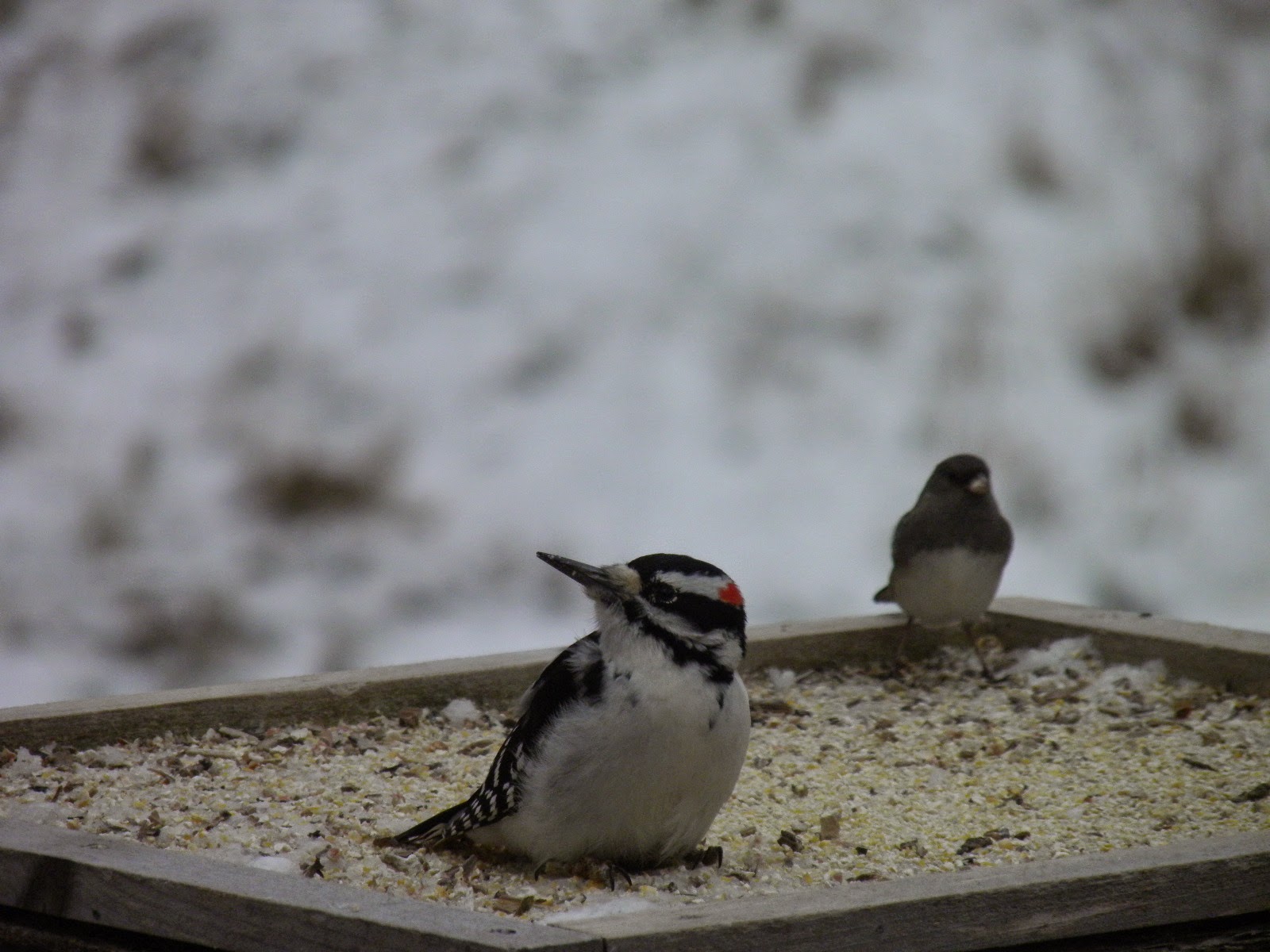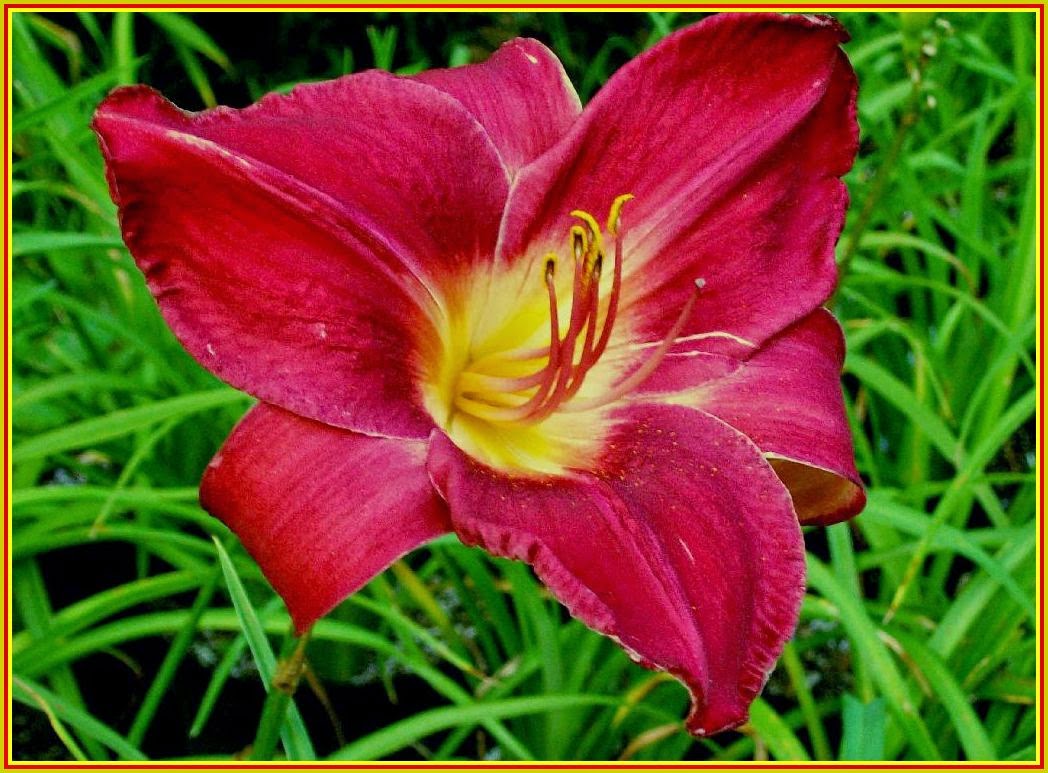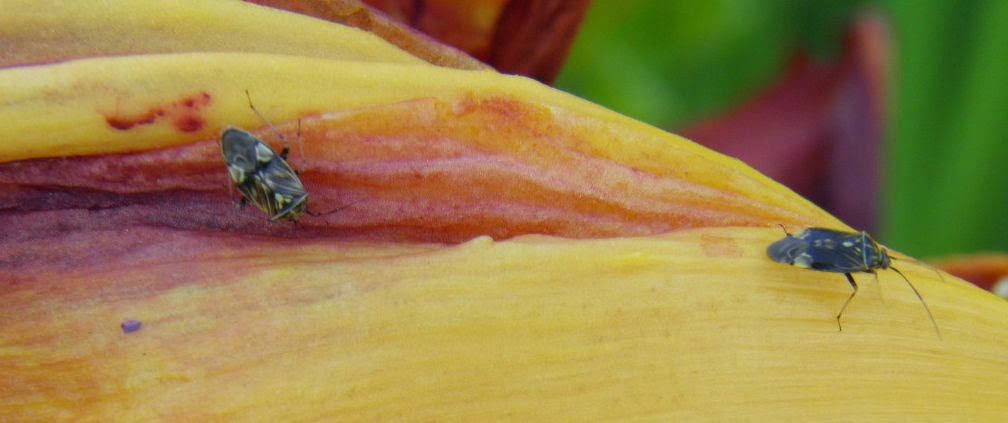Thursday, April 9, 2015
Just back to the house after a couple hours putting things back together at the flower farm. It's a little slower this year because the ground is still covered with snow and in some places it's so wet that it's difficult to walk. Gail is convinced everything will be different in two weeks and I am convinced there is so much frost in the ground this year that the ground will still be cold come May.
Our hosta display garden and all the potted hostas that we carry over remain under an insulating blanket: either a blanket of snow or an actual insulating blanket covering the potted hostas and then snow. Like any hosta enthusiast I wish I could see them in their glory right now but it's just too early to expect anything. Not only was there lots of snow this winter but there was lots of cold. The winter, January through March, set a record as the coldest in 121 years. That's cold! Many people think that deep cold means that all the bad insects have been killed off and it should be easier on our garden plants as a result. Nice wish but it doesn't happen that way. If anything the beneficials die off and the bad guys continue on.
If we are thinking about hostas and thinking about having great looking plants come mid June, it's important to think about making them as healthy as possible. One thing I learned twenty years ago is to save coffee grounds during winter months and then spread them around each hosta plant come spring. Slugs and snails are often a problem with hostas but the caffeine in coffee kills these troublesome animals and makes for much better looking plants. The research leading to this find came from Hawaii and is well documented. I have to admit that I had my reservations when first hearing about it but the research and the experience has convinced me. I have spread the word and some converts have gone to greater lengths than me to secure spent coffee grounds from restaurants and gourmet coffee processors.
As I continue to look at weather forecasts for this summer, dry conditions bother me. Sometimes weather folks miss their mark and dry becomes wet. I mention moisture because the absolutely best fertilizer for growing great hostas is water. Do some weather research for yourself and come up with a plan for providing adequate water to your hostas. By the end of June you will be able to see the value of your work if things do turn dry.
Despite whatever we do as gardeners, there are times, conditions and plants that just don't do what we want. I just read a few comments from hosta gardeners on their trouble growing Empress Wu, that giant hosta with Big John heritage. People have had trouble and in some areas they have even lost their plants after a couple years. Those with success have said that proper placement is critical. This hosta requires a couple hours of good sunlight each day and also need consistent moisture. This description reminds me when Great Expectations was released publicly via tissue culture. It was very problematic until gardeners determined that it needed more than average sunlight and like Empress Wu, consistent moisture. Both Empress Wu and modern Great Expectations ask for one thing you will never find on a plant marker: Be patient!
Writing from the mountain above Peacham Pond where we are at 33.2° with a three mph wind. Rain is on the way and warmer temperatures will be here into next week. Two deer went through the flower farm fence Tuesday night so maybe I'll get the holes patched up tomorrow.
George Africa
The Vermont Gardener
Vermont Flower Farm
On Facebook as Vermont Flower Farm and Gardens. Like us!
On Facebook as George Africa with gardening commentary
On Twitter, Linkedin, and other social media spreading the word of gardening.
Always here to help you grow your green thumb!
As I continue to look at weather forecasts for this summer, dry conditions bother me. Sometimes weather folks miss their mark and dry becomes wet. I mention moisture because the absolutely best fertilizer for growing great hostas is water. Do some weather research for yourself and come up with a plan for providing adequate water to your hostas. By the end of June you will be able to see the value of your work if things do turn dry.
Despite whatever we do as gardeners, there are times, conditions and plants that just don't do what we want. I just read a few comments from hosta gardeners on their trouble growing Empress Wu, that giant hosta with Big John heritage. People have had trouble and in some areas they have even lost their plants after a couple years. Those with success have said that proper placement is critical. This hosta requires a couple hours of good sunlight each day and also need consistent moisture. This description reminds me when Great Expectations was released publicly via tissue culture. It was very problematic until gardeners determined that it needed more than average sunlight and like Empress Wu, consistent moisture. Both Empress Wu and modern Great Expectations ask for one thing you will never find on a plant marker: Be patient!
Writing from the mountain above Peacham Pond where we are at 33.2° with a three mph wind. Rain is on the way and warmer temperatures will be here into next week. Two deer went through the flower farm fence Tuesday night so maybe I'll get the holes patched up tomorrow.
George Africa
The Vermont Gardener
Vermont Flower Farm
On Facebook as Vermont Flower Farm and Gardens. Like us!
On Facebook as George Africa with gardening commentary
On Twitter, Linkedin, and other social media spreading the word of gardening.
Always here to help you grow your green thumb!










































